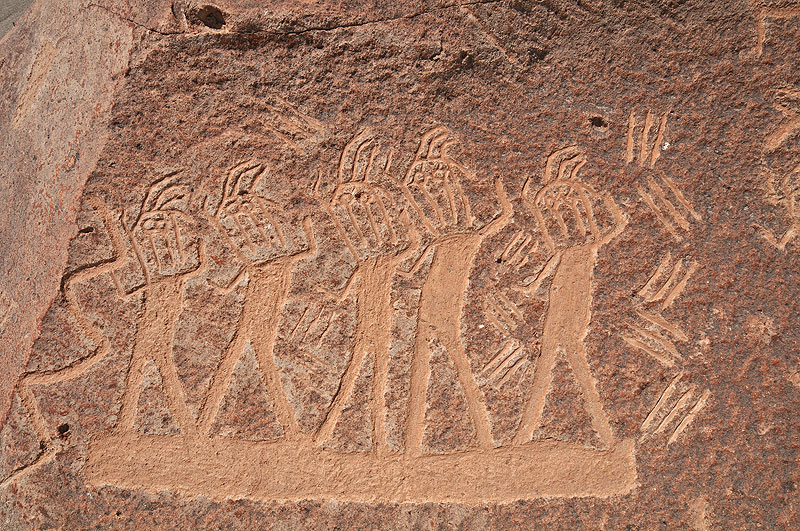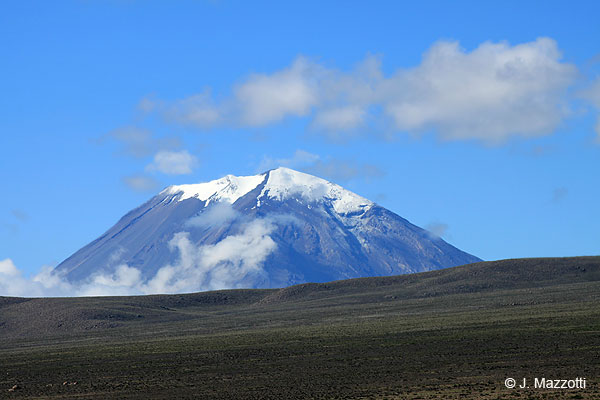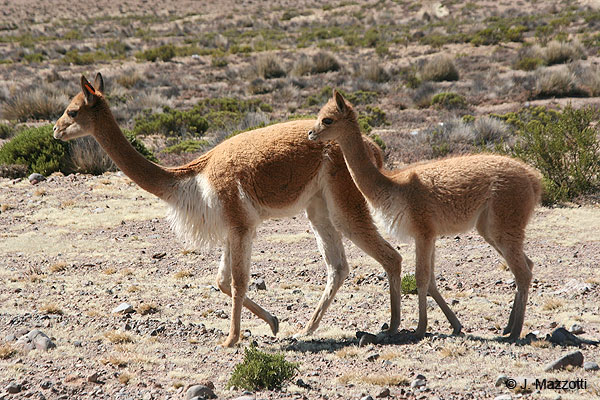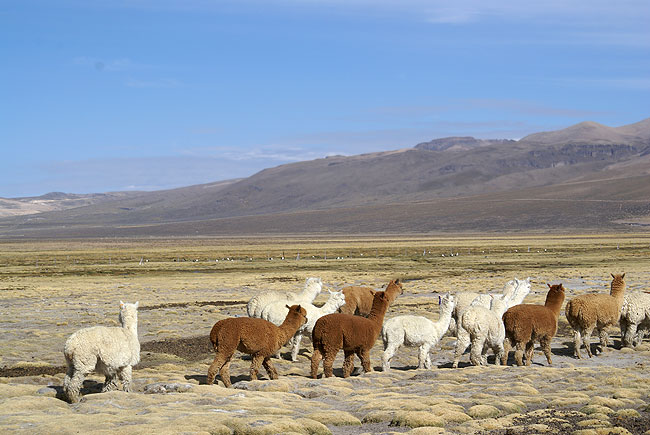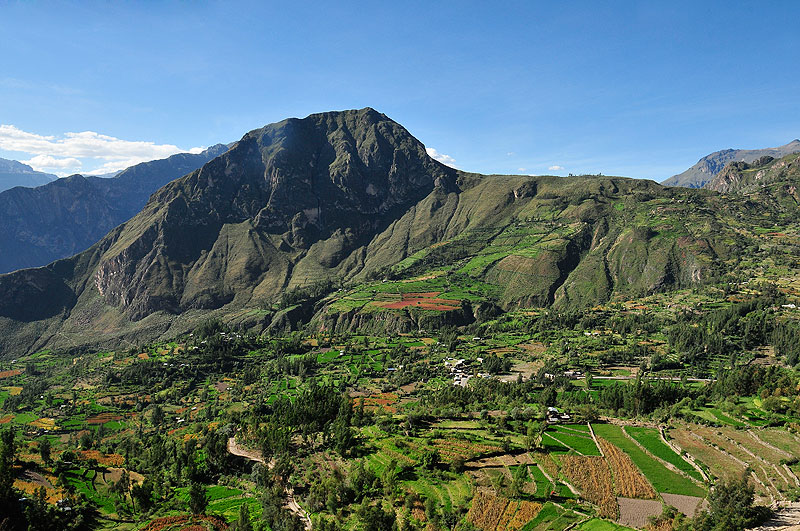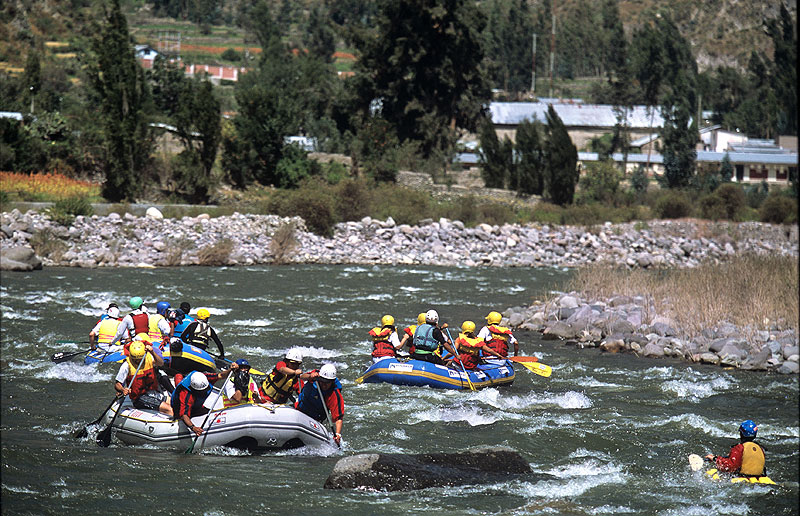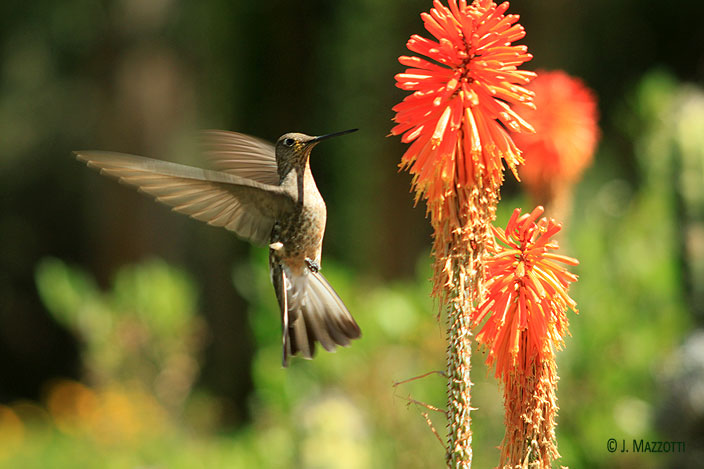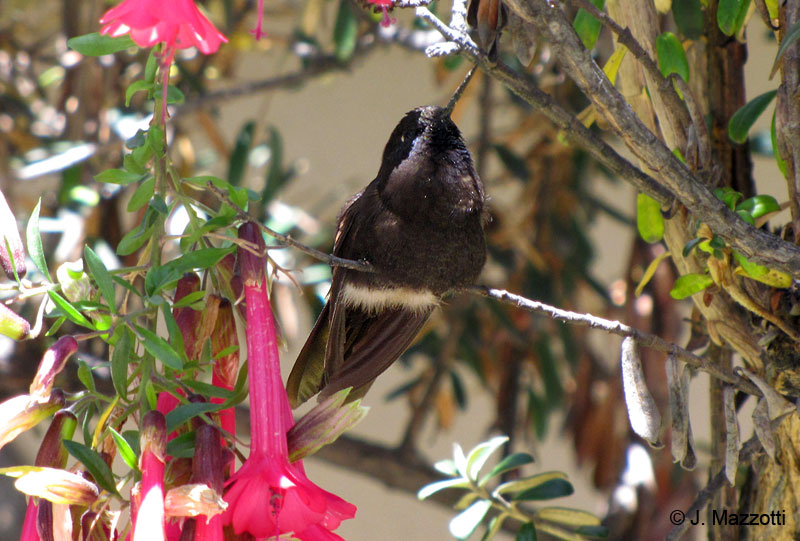Natural Attractions in Arequipa
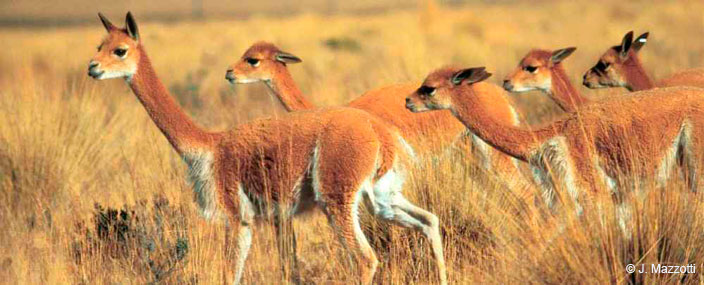
Nature and biodiversity in Arequipa stand in protected natural areas like the Reserva Nacional Salinas y Aguada Blanca area for the protection of high Andean species especially the vicuña, Landscape Reserve Cotahuasi of great biological, cultural and scenic diversity and the National Sanctuary of Mejía Lagoons protected area for migratory birds in the coastal area, area of special interest for birdwatchers with 195 species recorded.
The Arequipa's countryside is surrounded by 3 volcanoes, the Misti 5,822 meters, Chachani 6,075 meters and Pichu Pichu 5,425 meters.
Natural Wonders of Arequipa
Toro Muerto
One of the greatest cave-painting sites in the world. Some five square kilometers (2 sq. miles) populated by stones covered in thousands of diverse images that were carved by the inhabitants of the region between 700 and 1500 B.C. Just a few minutes away is Querullpa and the astonishing footprints left some 150 to 200 million years ago by prehistoric animals that inhabited the territory when this mountainous place was a tranquil beach. Location: Leaving the Colca Valley by the Pampa de Sihuas or directly from Arequipa, taking the road towards Lima and 7 Km (4 miles) on a turn at Corire (Uraca district). It's a 159 Km (99 miles) trip that will take you approximately 2 hours, 30 minutes by car.
Ampato Volcano
6,288 m.a.s.l., temporarily inactive, with a permanently snowcapped peak over 5,000 m.a.s.l.. Vegetation is scarce at its base, consisting largely of thorns and Peruvian feather grass. At its peak, from where the depression of the Colca Canyon can be seen, the "Lady of Ampato," was found, the funerary bundle of an Inca girl. Location: 173 Km. to the north of Arequipa (5 hours by 4x4).
Sumbay Caverns
They are located within the National Reserve of Salinas and Aguada Blanca, home to more than 500 cave paintings. These depictions, possibly made by the first settlers of the area, are approximately 6,000 to 8,000 years old. location: 97 Km (60 miles) to the north of Arequipa City by the Caylloma road (1 hour 45 minutes by bus).
Salinas and Aguada Blanca National Reserve (Reserva Nacional Salinas y Aguada Blanca)
35 Km / 22 miles northeast of Arequipa City (1 hour and 30 minutes by bus). Natural protected area, the reserve covers almost 366,936 hectares, including territory from the provinces of Arequipa, Caylloma (department of Arequipa), and General Sánchez Cerro province (department of Moquegua). It was created for the purpose of preserving important associations of flora and fauna, protecting the natural environment that was deteriorating and in the process of being destroyed, as well as caring for the vicuña through a repopulation program.
Impressive landscape of volcanoes, rivers, salt flats, and odd rock formations. It protects the threatened ecosystem of dry highlands that has been key to the conservation of both the Chili River Basin and the vicuña, in addition to other species of flora and fauna indigenous to that habitat. Three species of flamingoes, 358 plant varieties, 141 types of birds and more. It covers an area of 366,936 hectares (840,158 acres) and hosts three volcanoes: the Misti (5,840 m.a.s.l. - 19,160 f.), Chachani (6,075 m.a.s.l. - 19,931 f.), and Ubinas (5,676 m.a.s.l. - 18,622 f.), the most active in Peru.
The people inhabiting the reserve preserve a worldview that is deeply connected with nature and the balance of all its elements. Their traditions include yanapacuy, ayni (reciprocal work); minka, tinkan (giving back to earth and water) and knowledge about the use of medicinal plants. Their economy is based on breeding domesticated South American camelids for meat and for wool, which is used to make clothes or sometimes sold in yarns.
Inside this protected area is located Pampa Cañahuas and Toqrapampa, almost behind the Chachani Volcano, where the tarucas (Hippocamelus antisiencis) are protected (taruca is a specie of deer of a small size that are in a vulnerable situation). There are also great quantity of vicuñas in wildlife.
The road (34A - 1SE) between Arequipa city and Colca Valley - Chivay crosses this area, and you will be able to enjoy beautiful landscapes and to observe Andean camelids as vicuñas, alpacas and another species, specially in the area of Pampa Cañahuas.
National Sanctuary of Mejía Lagoons (Santuario Nacional Lagunas de Mejía)
Located 146 Km (91 miles) southwest of Arequipa City (2 hours and 10 minutes by car); 11 Km (7 miles) south from the Mejia village and 5 Km (3 miles) south of Mollendo.
Intangible area, conservation unit and protection of the fauna and flora, constitutes an important point of rest for numerous species of migratory birds. It is located in the coast area, and it includes the Mejía Lagoons, near the outlet of Tambo River. It is a formation of low flooding lands, separated by a narrow strip of beaches and sandbanks, of the sea.
In this habitat there are carried out investigations and big efforts to preserve and maintain it in their maximum natural state. There are many lagoons with different degrees of salinity, swamps, salt marshes, tortora reeds, hills, riverside estuaries, fields of salt grass, and sandy beaches, that constitute a complex ecosystem.
On the shores of the lakes are frogs (Bufo limensis) and lizards (Microlophus tigris), and fish sych as the lisa (Mugil cephalus) and pejerrey (Basilichthys sp.).
It is ideal for bird-watching, and 195 species have been registered: 75 are resident species (you can find them there all year long), 6 are ocean residing species, and 80 are migratory ones that travel.
These area include resident species as Gray Gulls (Larus modestus), Band-tailed Gulls (Larus belcheri), Kelp Gulls (Larus dominicanus), Gray-headed Gulls (Larus cirrocephalus), Sanderlings (Calidris alba), Black Skimmers (Rynchops niger), White-tufted Grebes (Rollandia rolland), Great Grebes (Podiceps major), Speckled Teals (Anas flavirostris), White-cheeked Pintail (Anas bahamensis), Cinnamon Teal (Anas cyanoptera), Common Moorhen (Gallinula chloropus), Andean Coot (Fulica ardesiaca), Virginia Rail (Rallus limicola), Cocoi Heron (Ardea cocoi), White Herons (Egretta alba), Snowy Egret (Egretta thula) and Little Blue Heron (Egretta caerulea).
Cotahuasi Canyon and Valley
An outstanding natural attraction in the heights of Arequipa, which is home to great biodiversity and varied settings like the beautiful landscapes of the Coropuna and Solimana snowy mountains, the Sipia waterfall and hot springs.
Cotahuasi Canyon is the deepest canyon in the world. The canyon is an impressive chasm that the river has eroded between two enormous mountain massifs: the Coropuna and the Solimana, similar in height to the Colca Canyon.
The area has been designated a Scenic Reserve (protected natural area) and it is perfect for hiking, canoeing, climbing, hang-gliding, or mountain biking. This natural reserve preserves an integrated environment where man and nature are living in close harmony, in a preserved cultural microcosm. The difficult topographic conditions have generated specific landscapes like agricultural terraces.
The Cotahuasi landscape reserve is a preserved area where the beauty of nature makes your trip a really pleasant experience. The landscapes are extraordinary, with a large biodiversity including many endemic medicinal plants : muña, retama, tara, coca, jara (Malva sylvestris), ruda (Ruta graveolens), kiwicha, yareta (Azorella compacta).
The landscapes are quite many, from the rivers at the bottom of the canyon to the cold desert areas of the summits. There are 12 different ecosystems in Cotahuasi reserve. There are also a number of Inca and pre-Inca places including the many agricultural terraces still in use today. The region is also rich with culture and traditions, preserved by ancient Andean people: weaving, colonial churches, inca trails, numerous festivals.
Location: 375 Km (233 miles) north-east of Arequipa City (9 hours by car and 12 hours by public bus).
Valley of the Volcanoes
Magical landscapes between 1,700 and 3,800 m.a.s.l. (5,577 and 12,467 fasl), with more than thirty small volcanic cones, each perfectly distinguishable. Dwarf volcanoes of varying heights (from 30, 60, 80 up to 300 metres -98, 197, 262 up to 984 feet-) make for a rare view that unfolds in the passages between lava flows from past eruptions. Its villages are inhabited by ancestral communities in a constant struggle for subsistence in these harsh lands. Between lava flows flourish unique flora and fauna, among them sixteen species of cacti. Location: Andagua District, in the west of Castilla Province, located eight hours (337 Km - 209 miles) from Arequipa City.
Bird-watching in Arequipa
The Colca Valley, Colca Canyon and Salinas y Aguada Blanca are great scenarios to bird-watching for Andean species, specially the condor (Vultur gryphus), other notable Andean bird species present in the Colca include the giant hummingbird, the largest member of the hummingbird family, as well as the Andean Goose, Chilean Flamingo, Black Metaltail (Metallura phoebe) -Endemic to Peru- and Mountain Caracara. The National Sanctuary of Mejía Lagoons located in the coast area constitutes an important point of rest for numerous species of migratory birds.
Southern Route: The bird-watching route through the Southern region has always been the best known. This circuit is also known as the “Megadiversity Route”. It crosses the rich coastal waters of Paracas and the mysterious Nazca Lines; the Andes through Pampa Galeras (where vicuñas are protected), or through Arequipa and the Colca Valley, or Cusco, the so-called “navel of the world”; the high Andean plateau of Puno and Lake Titicaca until it reaches the plains of Manu and Tambopata National Reserve. This route is noted for having the best infrastructure of the three routes and for being the cradle of the Inca Empire. The main birds that can be seen along this route are those that live in the Polylepis or queñual forests, those birds that visit the clay licks (known as "Collpas"); bamboo specialists and ant-eating birds; as well as other specialist categories. The most emblematic birds are the Inca Wren (Pheugopedius eisenmanni), and the Andean Cock-of-the-rock (Rupicola peruviana).





